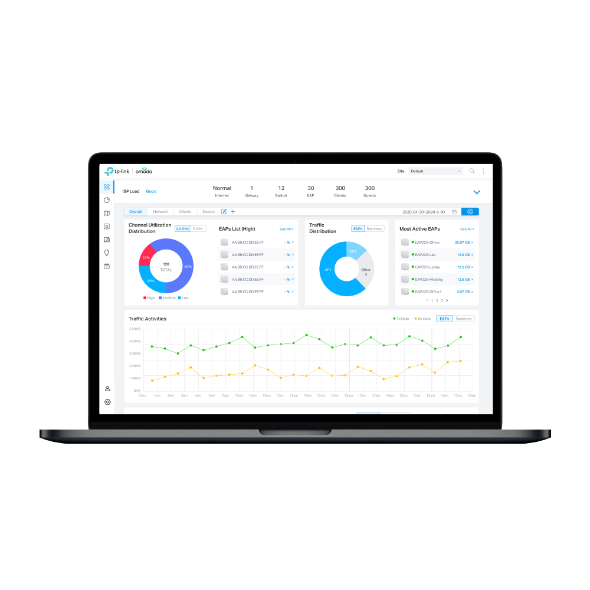Should I Keep the Omada Controller Running After Configuration?
This Article Applies to Omada Controller 2.4.4 or higher and EAP series with corresponding firmware.
EAP in Standalone mode has limited features. That’s the reason why we recommend to use Omada Controller for configuration with more advanced and stable features. This article will discuss whether the configuration on Omada Controller still works with EAPs when the Omada Controller is offline.
We summarize three types of features based on EAP Standalone mode and Controller mode:
1) Features are available and can be configured both on Controller and EAPs in Standalone mode. If the Omada Controller is offline, this kinds of features configured with Omada Controller still work with EAPs.
2) Features are only supported and configured on Controller but not on EAPs in Standalone mode. If the Omada Controller is offline, configuration no longer takes effect.
3) Features are supported both on Controller and EAPs in Standalone mode, but can only be configured on Controller. If the Omada Controller is offline, configuration keeps working.
1. Features are available and can be configured both on Controller and EAPs in Standalone mode. If the Omada Controller is offline, this kinds of features configured with Omada Controller still work with EAPs.
We list the following features which are available and can be configured both on Controller and EAPs in Standalone mode. When these features are configured on the Controller with EAP adopted, Controller issues the configuration to the connected EAPs. When the Omada Controller is offline, configuration keeps working because it has been saved on EAPs.
- Portal: No Authentication, Simple Password, External Radius Server
- Mac Filter
- Scheduler (Wi-Fi)
- LED
- SSH
- Management VLAN
- Load Balance
- SSID Isolation
- SSID broadcast
- Airtime Fairness
2. Features are only supported and configured on Controller but not on EAPs in Standalone mode. If the Omada Controller is offline, configuration no longer takes effect.
We list the following features which needs the Controller to keep running all the time.
- Portal: Voucher, External Portal Server, SMS Portal, Local User
After the Controller is offline, the wireless clients which have been authenticated can work without problem. However, the newly connected clients which attempt to get authenticated at the moment are unable to pass the authentication because the authentication function is down. For more details about portal, please refer to FAQ 1041
- Reboot Schedule
3. Features are supported both on Controller and EAPs in Standalone mode, but can only be configured on Controller. If the Omada Controller is offline, configuration keeps working.
There is no place for configuring this kind of features in Standalone mode even they are available on EAP itself. When these features are configured on the Controller with EAP adopted, Controller issues the configuration to the connected EAPs. When the Omada Controller is offline, configuration keeps working because it has been saved on EAPs.
- Band Steering
- Access Control
- Rate Limit
- RSSI
Is this faq useful?
Your feedback helps improve this site.
TP-Link Community
Still need help? Search for answers, ask questions, and get help from TP-Link experts and other users around the world.
4.0-F_normal_20221110005015k.png)
4.0-F_normal_1593323206680k.png)
